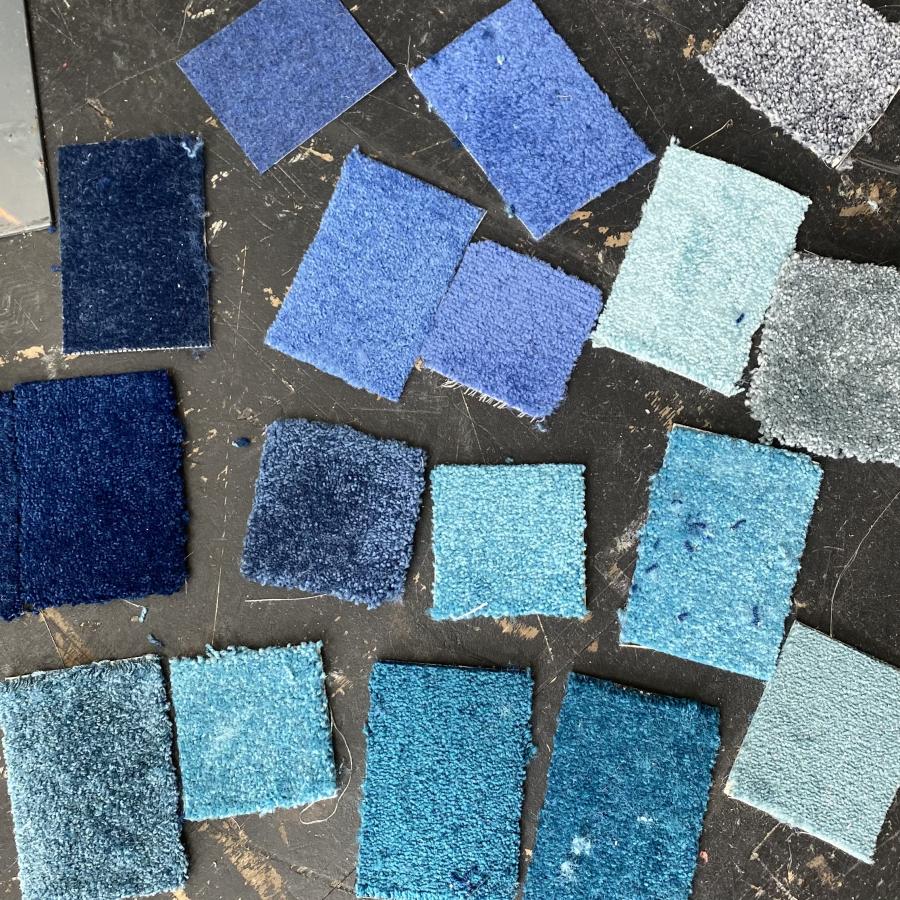It felt important for the questions Édouard Louis is asking around the relationship between queerness and class in Who Killed My Father to be approached with nuance, and as a personal, playful journey of self-discovery. Co-designer Hazel Low talks about creating a sensuous, visual language for an intimate, politically charged text.
Édouard Louis grew up gay, in working-class, rural France. Who Killed My Father is an autobiographical piece of storytelling about his relationship with his alcoholic, violent, right-wing father, a factory worker, who was left bedbound after an industrial accident. Édouard recounts the homophobic abuse he endured from his father and family as a child, weaving it together with memories of his father’s emotional and physical vulnerability. What unfolds is both personal and political and questions what it means to have a body at a time where they’re being more policed than ever.
The play begins, ‘If this were a text for the theatre…’, and in our production, it is. We see Édouard (Michael Marcus) putting on a play to find out who killed his father, retrieving childhood memories, but also attempting to rewrite, reassemble, and reimagine an alternative politics. The design of the piece was ultimately there to support him doing just that.
A square of deep blue carpet delineates the performance space, and grounds the action in softness. We wanted it to feel like an abandoned room at the back of a theatre, with an assemblage of objects hovering at the edges for Édouard to use as aides in his storytelling. It is important to Blythe Brett (set and costume co-designer) and I that every object on stage has purpose, and contains elements of duplicity and plurality. Queerness is embraced with objects not always appearing as they seem. A roll of paper-like material stands upstage left, as a direct reference to Louis’ as a writer, given gorgeous emotional charge through lighting by Joshua Gadsby. Practically this screen allows Marcus to play off his own silhouette, introducing other bodies and histories into the space, and allows for increased opportunity, in a one person performance, for intimacy and connection with our audience. It becomes a mirror, a space for reflection and play, and a canvas for our story to be told on. The delicacy of this screen, on its slender colorama stand and the soft blue carpet both provide a stark textural contrast to the stoic, grounded and heavy stack of breezeblocks stage left. These breezeblocks not only practically give Marcus levels to play with, but provide a link to his father’s physical work in the factory, as well as alluding to the concrete and asphalt of Édouard’s home town.
Louis' voice is both confrontational and deeply compassionate, and we wanted to support this through tangible, visual choices. Compassion is shown through the encouragement and embracing of play. Marcus interacts with certain objects with a childlike imagination - a hairbrush becomes a microphone, chalk is used as a cigarette. A soft grey blanket is reminiscent of Édouard’s Grandmother, and lays over Marcus’ lap in a display of tactility and tenderness. Scale is also prevalent, Marcus towers over a scalextric track when recounting Édouard’s memories of driving with his father. The queer, playful embracing of objects as image making and play is contrasted when Édouard brings out print outs of real politicians from successive French governments of the last 25 years. Being confronted with sudden, very real and literal imagery is an important dramaturgical choice to communicate Édouard confronting the reality of the French state, and an example of how we have given physical form to Louis’ confrontational voice.
Marcus, in his blue jumper feels at one with the space, they are connected, growing from and with each other. This explicit connection reminds the audience that they are watching Édouard tell his story in a space with which he has agency. The costumes are considered and specific, taking influence from the real Édouard Louis, and mirroring his unassuming style as a writer with recognisable and relatable items such as jeans and trainers. We want him to feel concrete, real, and grounded. A hi vis jacket hangs on a sack barrow, as if left by a stage technician, a nod to the French Gilets Jaunes grassroots workers’ movement, which Louis publicly supported in France. When Édouard dons it, with the passion of a red t-shirt glimpsed underneath, we see him fully embody the cause of workers like his father, and protest a society that too conveniently forgets them.
Blythe and I hope we have been successful in capturing the themes of this piece, in all of their multiplicities, through our collaborative work and sensitivity for Édouard Louis’ writing.
Tue 28 Nov - Sat 2 Dec at 7pm
Tickets £8 - £15
